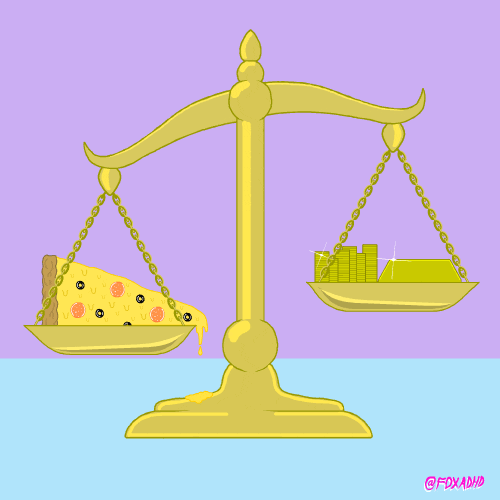
This logo isn't an ad or affiliate link. It's an organization that shares in our mission, and empowered the authors to share their insights in Byte form.
Rumie vets Bytes for compliance with our
Standards.
The organization is responsible for the completeness and reliability of the content.
Learn more
about how Rumie works with partners.
When you're shopping, do you know how to find a good deal?
Can you figure out how long it'll take you to finish your chores?

Math can help you solve real problems!
If you know what ratios and rates are, you can figure out the answers to these tricky questions and more by calculating and comparing rates.
What Is A Ratio?
A ratio compares two or more quantities, or amounts,that are measured with the same units.
If you compare a and b,you can explain the ratio in different ways:
a : b —the symbol : means "to", as in "a to b"
a / b —the / represents a fraction, with "a" as the numerator (the top or left side of the ratio) and "b" as the denominator (the bottom or right side of the ratio)
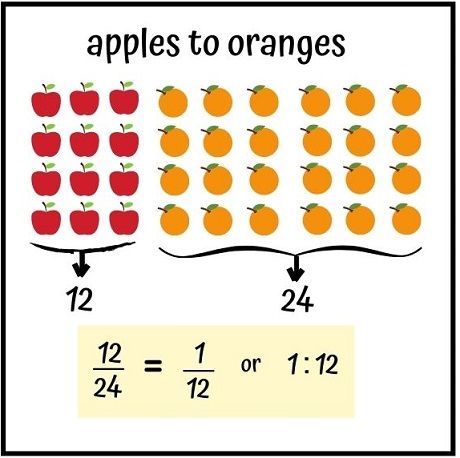
Rate Versus Unit Rate
Rate:
A rate is a ratio that compares two quantities of different units of measurement.
Use the word per or the symbol / to explain a rate.
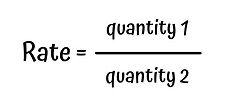
Ex: $52 per 64 ounces, 120 miles/2 hours, 150 words in 5 minutes
Unit Rate:
A unit rate is a ratio that compares the first quantity to one unit of the other quantity.
A unit rate has a denominator of 1.
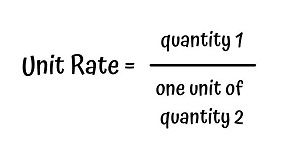 Ex: $2 per slice, 5.3 ounces per dollar, 49 miles per gallon, $18/hour
Ex: $2 per slice, 5.3 ounces per dollar, 49 miles per gallon, $18/hour
Did you know?
Calculating Unit Rate
To calculate unit rate:
Reduce the fraction ratio so it has a 1 as the denominator
OR
Divide the first term (or part) of the ratio by the second term
Example:
Percy mows 1/6 acre in 1/4 hour. How many acres can Percy mow per hour?

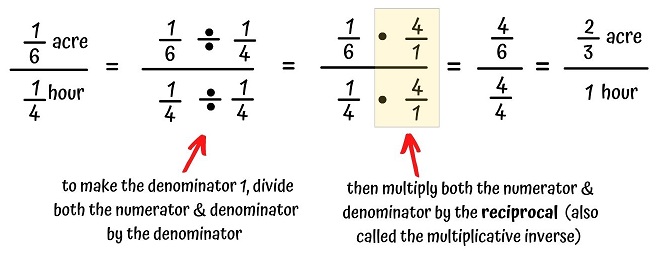
You can also use a ratio table:
Compare acres to hours.

Answer: Percy can mow 2/3 acre in 1 hour.
Scenario:
It takes Ben 15 minutes to run 1.5 miles.
Quiz
What is Ben's unit rate in miles/hour?
1.5 miles = 3/2 miles. 15 minutes = 1/4 of an hour. So 3/2 miles / 1/4 hour = 6 miles per hour.
Different Ways To Explain Unit Rate
When comparing two measures, there's more than one way to write a unit rate.
Consider the examples below.
How many pieces of candy can you buy for $1?
 👉 4 candies per dollar
👉 4 candies per dollar
How many dollars does it cost to buy 1 piece of candy?
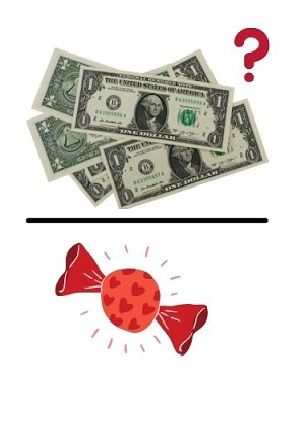 👉 25 cents (1/4 of a dollar) per candy
👉 25 cents (1/4 of a dollar) per candy
Here, the 2 measures considered are the same — the number of pieces of candy & the price in dollars.
Both involve a quantity of 1 in the denominator.
In each case, the unit rate to be calculated is different — per dollar versus per candy.
How To Comparison Shop?
To compare the prices of different sized packages, find the unit price. It's the unit rate for one item.

Scenario:
Store A is selling 3 boxes of cereal for $6. Each box has 13.75 ounces (oz) of cereal.
Store B is selling 3 boxes of cereal for $7. Each box has 15 oz.

👉 Store A has the better deal because it costs less per 1 oz of cereal.
Store A's costs 14.5 cents per oz vs. Store B's at 15.5 cents per oz.
It's your turn now!
Should you buy apples by the bag? Or is it a better deal to get individual apples?
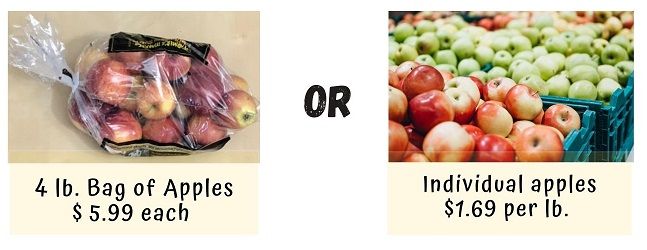
Quiz
Which is the better deal?
Buying the bag of apples is the better deal because the cost of 1 lb. of these apples comes to $1.49, which is cheaper than the other option.
Did you know?
Take Action
Become more confident in your purchasing decisions and more efficient with your chores!

This Byte has been authored by
Chitra Krishnan
Lifelong Learner
